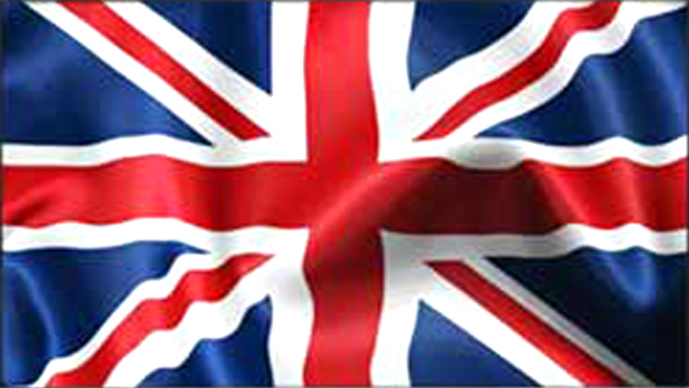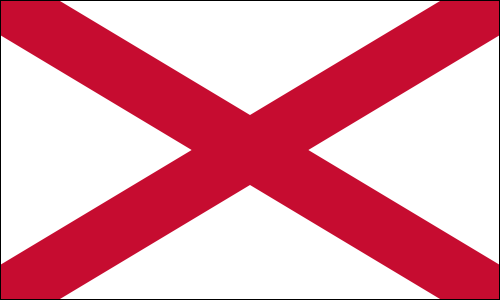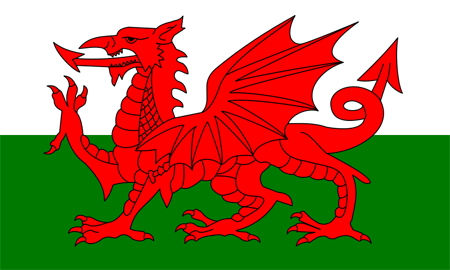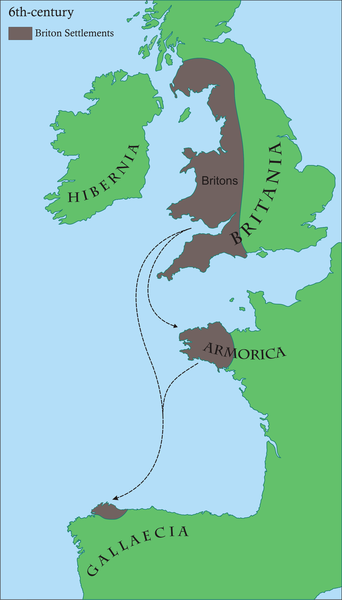AMERICAN HOLIDAYS : THANKSGIVING
BRITISH & AMERICAN TRADITIONS: HALLOWEEN
1st.NOVEMBER: ALL SAINTS´ DAY
http://www.catholic.org/saints/allsaints/
All Saints' Day is a solemn holy day of the Catholic Church celebrated annually on November 1. The day is dedicated to the saints of the Church, that is, all those who have attained heaven. It should not be confused with All Souls' Day, which is observed on November 2, and is dedicated to those who have died .
THE BRITISH EDUCATION SYSTEM
THE UNION JACK
Saint George of England,

Saint Andrew for Scotland
Wales does not have any representation on the flag and its own flag is
Saint George is the patron saint of England. People celebrate Saint George´s day on 23rd April. The flower of England is the rose.
Scotland´s patron is Saint Andrew and his special day is November 30th. The thistle is the emblem of Scotland.
The patron saint of Wales is Saint David. Welsh people wear daffodils on Saint David´s day on March 1st.
A SHORT HISTORY OF BRITAIN
Before the Roman invasion
About 2,700 years ago, people called Celts went to Britain from Europe. No-one called them Celts in the Iron Age, they were called Britons.Gradually, they mixed in with people who were already there. All those living in Britain became known as Britons. They were divided into tribes, some of them were Caledones or Picts, Brigantes, Parisi, Silures etc.
Celtic people moved around Europe and they stablished in different countries.
The Celts brought with them the skill of making iron tools and weapons. They built towns, which became trading centres. They were mainly farmers, but they made jewellery, pottery, leather goods...
They fought on foot with spears and swords while leaders used chariots. Warriors were painted or tattooed with a blue dye called woad.


 The word Celt comes from the Greek word, Keltoi, which means barbarians and is properly pronounced as "Kelt". The name Celts is a 'modern' name and is used to collectively describe all the many tribes of people living during the Iron Age. Northwest Europe was dominated by three main Celtic groups:
People visiting Britain wrote of their impressions of the people and things they saw. Many of these reports are biased.
Celtic Priests |
The Iron Age Celts of Europe and Britain were very superstitious people.
Celtic priests, called Druids, were the link between the supernatural world and the ordinary human one. They were able to predict what would happen in the future by interpreting nature. It is likely that they knew how to read and write, and they certainly had a good grasp of mathematics. They knew something of medicine and law, and they could trace the stars and the planets. The main centre of the druids in Britain was Anglesey, in Wales.
.

They believed in many gods and they may have sacrificed humans.
Gods and Goddesses
The Celts believed in many gods and goddesses: over 400 in fact. Among them were:Sucellos, the sky god, with a hammer that caused lightning,Many gods had no names, but lived in springs, woods and other places. Offerings to the gods were thrown into lakes, rivers and left by springs and wells.
Nodens, who made clouds and rain.
Celtic festivals were held throughout the year. They measured time in Lunar (moon) months, and in order to bring the lunar and solar years into agreement would add an extra month to the year every three or four years.
The Four main Festivals of the Celtic year
Great feasts were held four times during the year - Imbolc, Beltain, Lughnasa and Samhain.
- Imbolc - 1st February
- Beltain - 1st May(See May Day)
- Lughnasa - 1st August
- Samhain - 1st November
The Celtic tribes lived in scattered villages. They lived in round houses with thatched roofs of straw or heather.The walls of their houses were made from local material. Houses in the south tended to be made from wattle (woven wood) and daub (straw and mud) as there was an ample supply of wood from the forests.





Celts in Britain today
There are still quite a lot of Celts living in the British Isles today. They live mainly in Wales, Cornwall, Scotland, the Isle of Man and Ireland. The Celts living in Britain today stem from the two main types of Celt who invaded Britain:
    | ||||
THE ROMAN ATTACKED BRITAIN, 55 BC

They appeared off the British coast near Dover. Julius Caesar brught an army of 10,000 men.He wanted to conquer a new land and at the same time to punish those tribes who had been helping the Celts in Europe.
First invasion - Caesar's first raid
The 10th Legion leadered by their standards "Aquilae" started fighting the Britons, but these weren´t so well trained and soon fled.

After this victory they left the new land and didn´t return for 97 years.
In AD 43, the Roman Emperor, Claudius decided to make Bitain part of the Roman Empire. An army of 40,000 Roman soldiers landed in Kent this time they had come to stay.
The Romans made alliancs with some tribes and conquered others, one by one. Slowly, they drove their enemies into the mountains of Wales and Scotland.
The Romans did not invade Scotland until AD 84 but altough they won some battles they never could conquer Scotland.

 Third and final invasion
Third and final invasionNearly one hundred years later, in 43 A.D. (43 years after Jesus was born), Emperor Claudius organised the final and successful Roman invasion of Britain. General Aulus Plautius led four legions with 25,000 men, plus an equal number of auxiliary soldiers. They crossed the Channel in three divisions, landing at Richborough, Dover, and Lympne.
Many tribes tried to resist the Romans. It took about four years for the invaders to finally gain control over southern England, and another 30 years for them to conquer all of the West Country and the mountains and valleys of Wales. The battle for Yorkshire and the remainder of northern England was still underway in AD 70.

The first Roman city was Camulodunum also called Colonia Vitricencis. (We know it by the name of Colchester.) It was the seat of Roman power and governance of Brittania until sacked during the Boudiccan revolt.
The Roman won many victories and it seemed as though nothing could stop them from ruling the whole country.
Then, in AD 60, the Iceni Tribe, led by their queen Budicca, revolted.

A famous Celtic Queen
London was then established as a seat of governance, and only became important after the Camulodunum event.
 Why did the Romans invade Britain?
Why did the Romans invade Britain?Why the Romans came to Britain is not quite certain. Two reasons have been suggested:
- The Romans were cross with
 Britain for helping the
Britain for helping the  Gauls (now called the French) fight against the Roman general Julius Caesar.
Gauls (now called the French) fight against the Roman general Julius Caesar.
- They came to Britain looking for riches - land, slaves, and most of all, iron, lead, zinc, copper, silver and gold.
The Romans called London 'Londinium'.
The River Thames was quick way to transport goods between
 Why was the Roman Empire important?
Why was the Roman Empire important?The Romans, even today, play an important part in our lives. Many of the things we do or have originated from the Romans.
 The Romans gave us
The Romans gave us- Language
The language we used today was developed from the Romans. The Romans spoke and wrote in Latin and many of our words are based on Latin words. - The Calendar
Did you know that the calendar we use today is more than 2,000 years old? It was started by Julius Caesar, a Roman ruler. It is based on the movement of the earth around the sun, and so is called the 'solar calendar.' The solar calendar has 365 days a year, and 366 days every leap year, or every fourth year. The names of our months are taken from the names of Roman gods and rulers. The month 'July,' in fact, is named after Julius Caesar himself! - Laws and a legal system
The laws and ways we determine what to do with someone who is accused of breaking a law came originally from the Roman Empire. - The Census
The Roman Empire was huge and included millions of people living over a large area. How did they keep track of all these people? Easy! They counted them! The Roman Empire began the practice of taking a census, or a 'count,' of all the people within its boundaries every so often. Today, many countries like ours take a census every 10 years.
The Romans also gave us:
- straight roads, central heating, concrete aqueducts (bridges for water) and...Romans invented towns in Great Britain.

Reconstruction of Roman Sichester
The Roman towns were full of fine buildings and temples.
 The Romans liked everything to be organised and orderly. Streets were laid out in neat, straight lines, like on a chess-board. In the middle there was a large square, called the forum. It was used as a market place and for meetings. It had shops and offices on three sides and government offices on the other side.
The Romans liked everything to be organised and orderly. Streets were laid out in neat, straight lines, like on a chess-board. In the middle there was a large square, called the forum. It was used as a market place and for meetings. It had shops and offices on three sides and government offices on the other side.Many towns had running water and sewers. Aqueducts were bridges for bringing water to the towns.
Only the rich had water piped to their houses; everyone else used water from public fountains. The only toilets were public lavatories, which were built around the town and connected to underground sewers
Most towns would also have shops as well as the forum. At one end of the forum was a large building called the basilica. There were temples too where the Roman gods were worshipped. Some towns had public baths, an open-air theatre and huge monumental arches.
Throughout their empire the Romans built towns in exactly the same style. They were designed in the form of a grid, with streets built at right angles to each other and parallel with one of the two main roads.

The three largest were London, Colchester and St. Albans. Colchester was their main town.
The Romans called our towns different names to what we know them as today.
Verulamium (St Albans),Lindum (Lincoln), Eboracum (York)
Every town with a name ending in 'chester' or 'caster' or ' cester' was once a Roman town e.g. Doncaster, Dorchester and Cirencester.







.PNG)
I think this history is very interesting.
ResponderEliminarAnd I think that it's important
to learn English too because lots of news and publications are in this lenguage and in most countries people speak English, so we can understand each other.
That´s absolutely true. Thank you for your comment. We´ll continue learning about the British culture and improving your Enlish
ResponderEliminarcharo hemos estado viendo misterios sin resolver y nos ha gustado uno que se llama shroud of turin y va sobre un misterio sobre con que enterraron a cristo
ResponderEliminarI'm very happy because you add most information and now I can read it!!!!
ResponderEliminar:D
charo puedes decirnos cuando vas a colgar las notas del acumulativo???
ResponderEliminarun saludo
I'm surprised! You add information about romans.
ResponderEliminarI like read romans' history.
:) XD :)